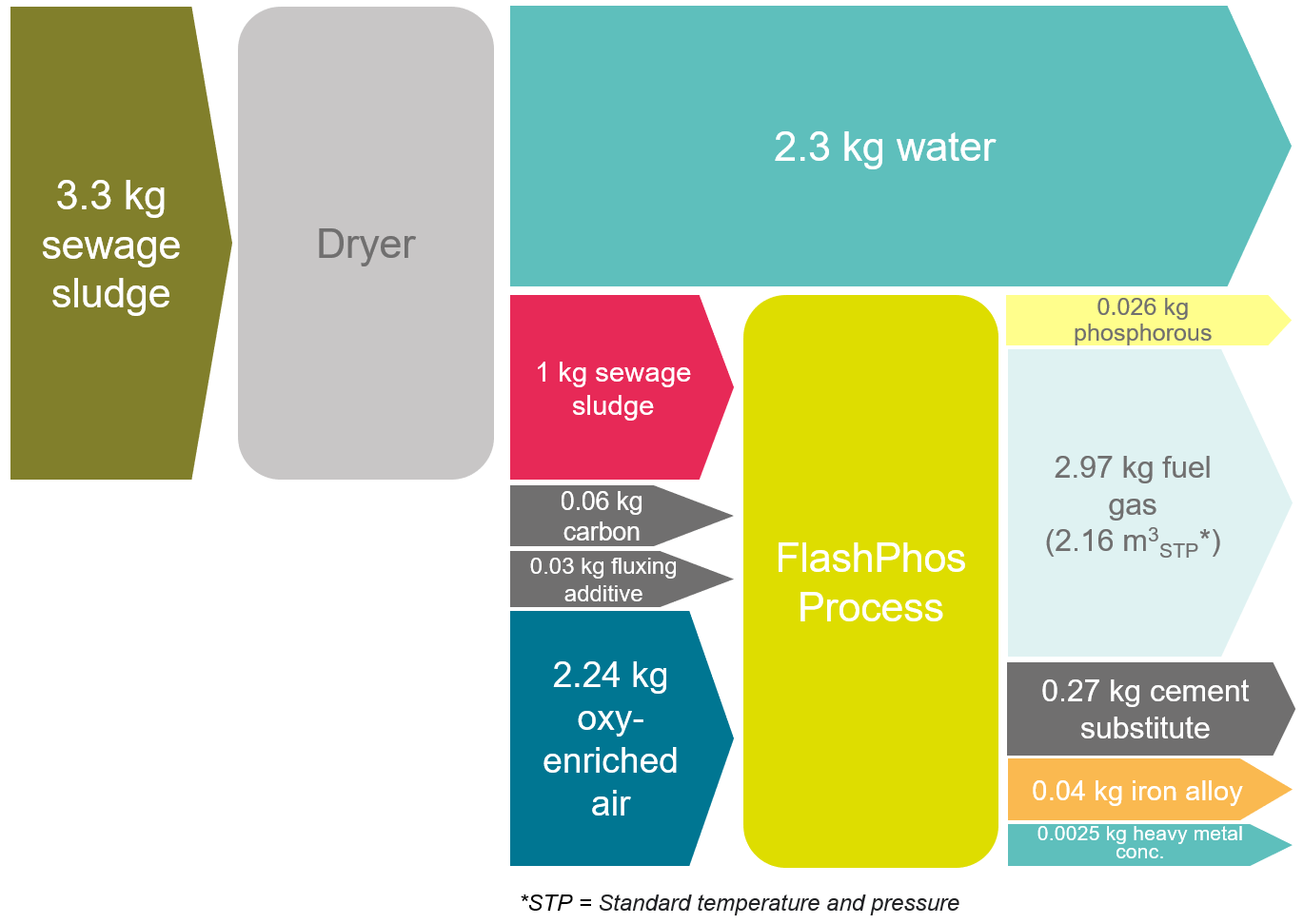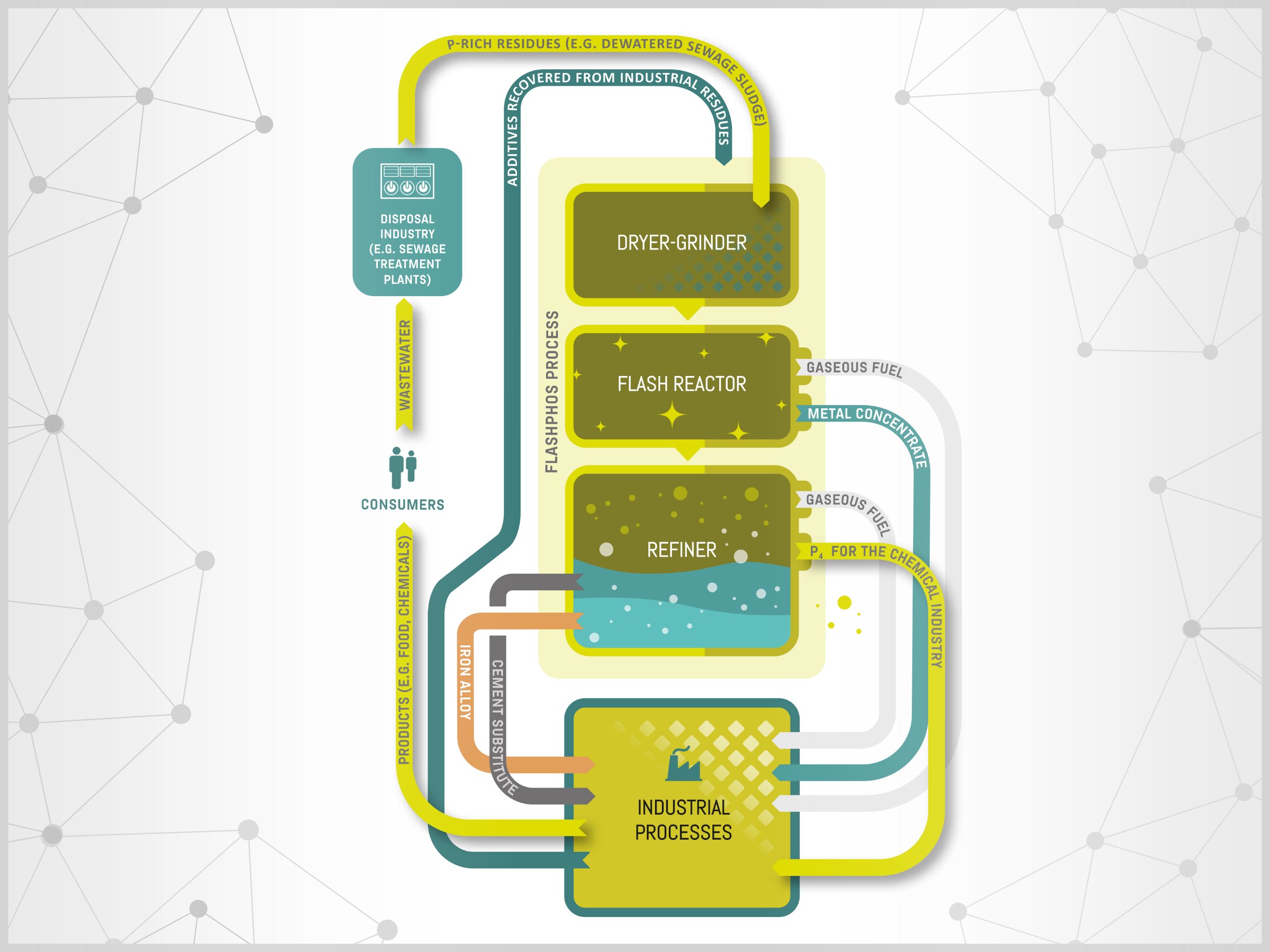In plant engineering, Conceptual Engineering is the first of three stages, in which the basic components, mass, and energy flows necessary to make a process run are determined. In this blog, we want to give you an overview of our conceptual engineering activities, highlighting the main components of the FlashPhos process and its mass balance.
How does the FlashPhos process work?
The core FlashPhos process treats sewage sludge in a specially developed dryer-grinder (see our two previous blogs on the dryer-grinder and the dryer-grinder pre-experiments) and subsequently in two different types of high-temperature reactors, the ‘Flash Reactor’ and the ‘Refiner’. In this blog, we want to introduce you to the latter two.
The Flash Reactor gasifies dried sewage sludge with air and oxygen. Reaction products are a gas with a remaining high heating value and the Flash slag. While the gas, containing most of the sludge’s contaminants (mainly heavy metals), is combusted in a post-combustion chamber and cleaned with a filter, the decontaminated Flash slag leaves the reactor, containing all the sewage sludge’s phosphorus.
The Refiner is the second reactor, which processes the Flash slag after addition of a reducing agent. In this reactor, we reduce the phosphates of the Flash slag, producing a refiner gas containing the final product, white phosphorus.
From this refiner gas, the white phosphorus is removed using state of the art technologies. The refiner gas has also a high heating value and can be used for energy production.
As the second main product of the FlashPhos process, the Refiner produces a slag. To be able to use this slag as a cement substitute, it is transferred in hot and liquid form into a granulator, which will also be built and operated as part of the project.
Using the FlashPhos process, 26 g of phosphorus and 270 g of cement substitute can be produced from 1 kg of dried sewage sludge input (Figure 1).

Figure 1 Mass balance of FlashPhos process
The FlashPhos partners USTUTT-IFK, ARP, INERCO and USTUTT’s subcontractor SYSTEC have worked on the conceptual engineering, which contains many more details than the ones shown here.
Conceptual engineering is key to the FlashPhos project as it is the groundwork for basic and detailed engineering in other project work packages.
The FlashPhos partners are now continuing the engineering process elaborating every technical detail of the FlashPhos pilot plant, producing the technical specifications and drawings necessary to erect the plant.
All this is bringing us closer to building the first full-scale FlashPhos plant by 2025 and starting industrial-scale white phosphorus production for the first time in Europe since 2012.
For further information contact
M.Sc. Christian Schmidberger
University of Stuttgart, Institute for Combustion and Power Plant Technology
christian.schmidberger@ifk.uni-stuttgart.de
+49 711 685 67762

